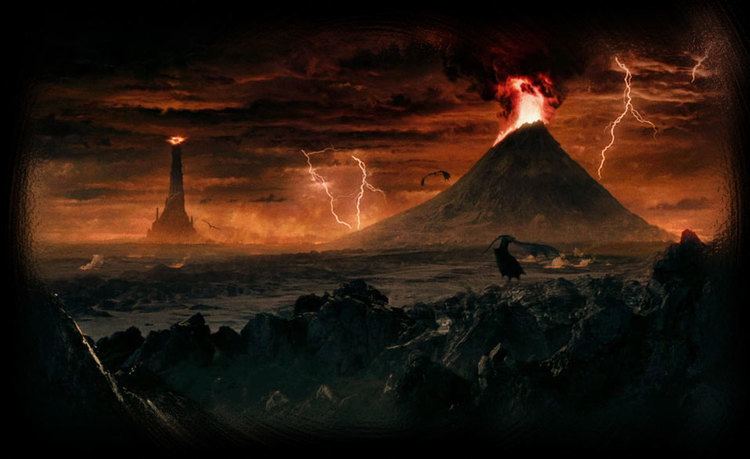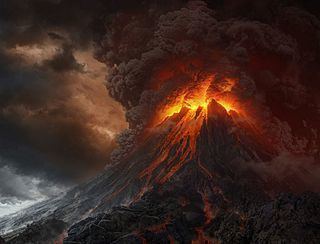Type Volcano | ||
 | ||
Notable locations the Chambers of Fire, the Cracks of Doom | ||
Mount Doom is a fictional volcano in J.R.R. Tolkien's Middle-earth legendarium. It is located in the northwest of the Black Land of Mordor and close to Barad-dûr. Alternative names, in Tolkien's invented language of Sindarin, include Orodruin ("fiery mountain") and Amon Amarth ("mountain of fate").
Contents
- Lord of the rings conquest evil side mount doom nazgul quest part 9
- History
- Concept and creation
- Adaptations
- Namesakes
- References

The Sammath Naur ("Chambers of Fire"), located high up in the mountain's cone, were made by the Dark Lord Sauron in the Second Age. They comprised a tunnel leading to an interior platform with molten lava below it, known as the Cracks of Doom. It was here Sauron forged the One Ring during the Second Age.
The mountain represents the endpoint of Frodo Baggins' quest to destroy the Ring, which is recounted in The Lord of the Rings. The mountain's chambers are the site where the One Ring was originally forged by Sauron, and the only place it can be destroyed.
Lord of the rings conquest evil side mount doom nazgul quest part 9
History
When Sauron began searching Middle-earth during the Second Age for a permanent dwelling place, his attention was immediately drawn to Mordor, and especially to Orodruin, whose power he believed he could use to his advantage. He subsequently established his kingdom based around Orodruin and "used the fire that welled there from the heart of the earth in his sorceries and his forging". The most famous of Sauron's creations forged at Mount Doom is the One Ring. In The Fellowship of the Ring, Gandalf explains that the materials of which the Ring is made are so durable and the enchantments with which it is imbued so powerful that it can only be destroyed in the Cracks of Doom where it was made.
Orodruin is more than just an ordinary volcano; it responds to Sauron's commands and his presence, lapsing into dormancy when he is away from Mordor and becoming active again when he returns. When Sauron is defeated at the end of the Third Age, the volcano erupts violently.
Concept and creation
According to Tolkien, Mount Doom corresponds to the volcano of Stromboli in Sicily. However, some writers have compared various 21st century eruptions of Mount Etna to Mount Doom.
The phrase "crack of doom" is the modern English for the Old English term for Ragnarök, the great catastrophe of Norse mythology. The term became used for the Christian Day of Judgement, as by William Shakespeare in Macbeth (Act 4, scene 1, line 117). This appealed to Tolkien, who was a Professor of Old English. Another possible source of the name is a long story by Algernon Blackwood.
Reviewer Bart Higgins noted the similarity between Tolkien's Mount Doom and the volcanic caverns under Venus depicted in Perelandra by Tolkien's friend C.S. Lewis. "In both cases, the book reaches a cataclysmic scene of a struggle in an underground cavern, ending with an evil being falling into volcanic fire and being consumed. Since it is well known that Tolkien and Lewis frequently shared with each other their respective works in progress, it is reasonable to assume that the resemblance is no coincidence".
Adaptations
In Peter Jackson's film adaptation of The Lord of the Rings, Orodruin was represented by two active volcanoes in New Zealand: Mount Ngauruhoe and Mount Ruapehu. In long shots the mountain is either a large model or a CGI effect, or a combination. It was not permitted to film the summit of Ngauruhoe because the Māori hold it to be sacred. However, some scenes on the slopes of Mount Doom were filmed on the slopes of Ruapehu.
Namesakes
The International Astronomical Union names all mountains on Saturn's moon Titan after mountains in Tolkien's work. In 2012, they named a Titanian mountain "Doom Mons" after Mount Doom.
Swedish melodic death metal band Amon Amarth, whose lyrics deal primarily with Viking culture and Norse mythology, are named after the mountain.
